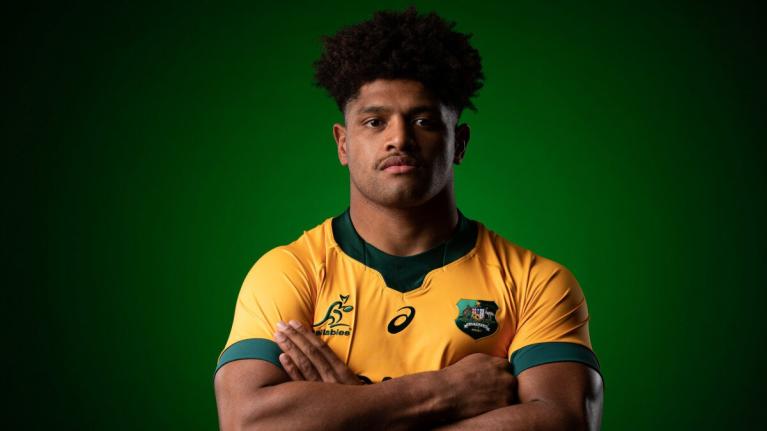Answering the Rob Valetini-Harry Wilson conundrum

As 2022 dawns for the Wallabies numerous challenges lay at the feet of Head Coach Dave Rennie including how he uses his incumbent number 8 Rob Valetini, and the rested rising star Harry Wilson who arguably plays his best rugby in the same numbered jersey.
Wilson last played international rugby on the 14th of August 2021 at Eden Park against the All Blacks where he came off the bench in the 62nd minute to replace Waratah Hard Man Lachie Swinton on the side of the scrum. Since that 18-minute cameo Wilson has not featured and was not selected for the ill-fated end of year tour where the Wallabies failed to win a test match in Europe.
It is understood the reason that Wilson was rested was to allow him the opportunity to “freshen up” for 2022 and to improve his game around the breakdown area. The inference drawn is that Harry Wilson very much remains on the Wallaby radar yet where and how he re-enters the Wallaby frame in 2022 will be fascinating and also a conundrum for selectors.
2021 was a statement year for incumbent Number 8 Rob Valetini 2021. The 18-test capped backrower illustrated during the 2021 Rugby Championship that he can more than mix it with the All Blacks and Springboks and was the Wallabies most potent ball carrier averaging 7.5 meters on each carry.
In fact, Valetini carried the ball more than any other forward playing in the tournament that is a testament to his work ethic considering the quality of backrowers he was competing against.
Whilst on the ill-fated European tour Valetini was poor in the opening test match against Scotland, his response against England a week later was demonstrative of how far he matured during the season both topping the Australian tackle count and meters gained at Twickenham. He was a player who roared in the Lion’s den on that day.
His 14th-minute red card for a mistimed tackle on Welsh lock Adam Beard in the final test of the tour was not indicative of his season. Note the line speed shown and eagerness for contact is what can also be taken away from that incident, not the poor placement of his head into contact as Rob Valetini is not a dirty player. If his tackle execution was better, it would have been a lawful, momentum-changing demolition of Adam Beard. Precisely what was required and only centimeters of off timing away from achieving.
It is a difficult issue the Wallaby selectors face as they have to both maintain the development trajectory Rob Valetini is on, but also re-ignite the international career of Harry Wilson at the same time, who has already demonstrated in his brief career he has the ability to be one of Australia’s great ball running back-rowers in the mould of Mark Loane, Willie Ofahengaue, Owen Finnegan and Toutai Kefu.
In selecting a Wallaby back row, the first obvious selection is Michael Hooper at 7. The next issue is finding a balance that allows Hooper to play his natural game and does not draw him into compensating for inaccuracies and breakdown, or the inability to run a support line.
In the 2021 home series against France, the Wallabies as a whole were exposed by such breakdown inaccuracies not just Harry Wilson alone and I say it would be unfair for him to shoulder the blame.
The conundrum of trying to select two high-quality players who both excel in the same position is not a foreign one to Australian selectors. I can recall the debate over Paul McLean v Mark Ella; Jason Little v Daniel Herbert; David Wilson v Brett Robinson; George Smith v Phil Waugh, David Pocock v Michael Hooper and there are many more to add to like arguments. At times selectors have made room for both with varying degrees of success but should be attracted to doing so in the case of Harry Wilson and Rob Valetini.
There is a cogent augment in starting both Rob Valetini and Harry Wilson for the Wallabies in 2022 and allowing Wilson to apply his running game off the first receiver, as opposed to being the first receiver and used to barge for meters in a primary running pod – a role more suited for Rob Valetini.
In 2021 the Wallabies relied desperately on the likes of Samu Kerevi and Hunter Paisami to gain midfield meters and both were heavily marked upon. Launching Harry Wilson into that same space in concert with a Kerevi or Paisami significantly amplifies the threat of the Wallabies running game something any coach would crave for.
Furthermore, how can both truly develop and learn to dominate the international stage as they appear to have the ability to do if they are ‘Job sharing’ and only playing limited minutes? The clock is ticking. If the Wallabies are to be a genuine chance at success at the 2023 Rugby World Cup, they will need a back row with a body of work under its belt that knows it can compete with the likes of New Zealand, South Africa and France amongst others.
There are many contenders for Wallaby back-row positions such as Rob Leota, Pete Samu, Lachie Swinton, Fraser McReight, Ned Hannigan and the experienced but uncapped Waratah Jed Holloway who will all push for selection along with Rob Valetini and Harry Wilson yet it is the latter two and Michael Hooper that could cause any international side issues if they can learn to work in concert with each other and allow for each other’s strengths to excel regardless of what number is on their back.
Latest Comments
What must be concerning for Ireland is that the U20 side were woeful in the 6N tournament, so the next level being the Wolfhounds will have to supply the next generation of stars. Will there be enough, to plug the holes though?
Go to commentsI guess the adage if small things will apply.
Go to comments